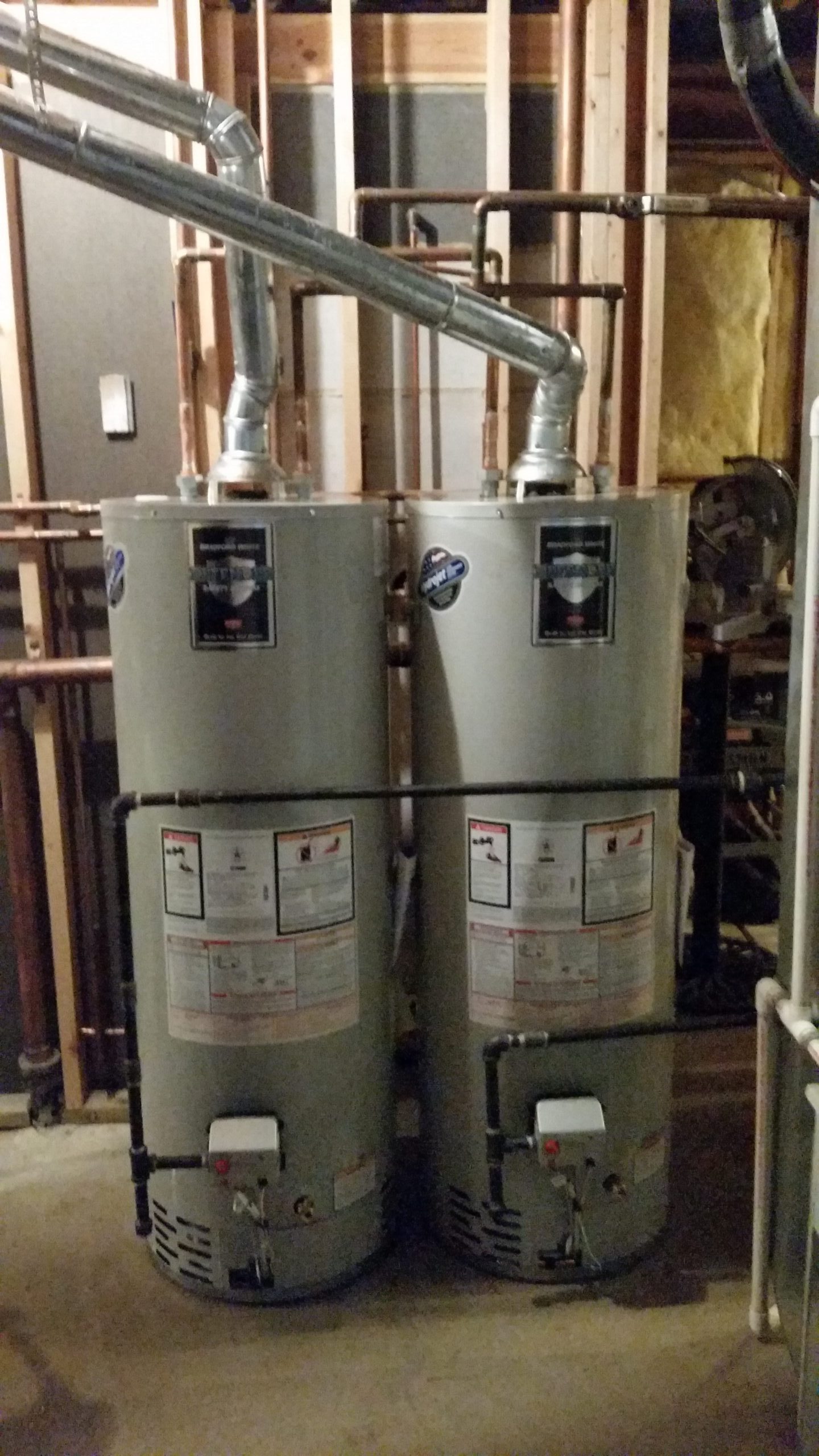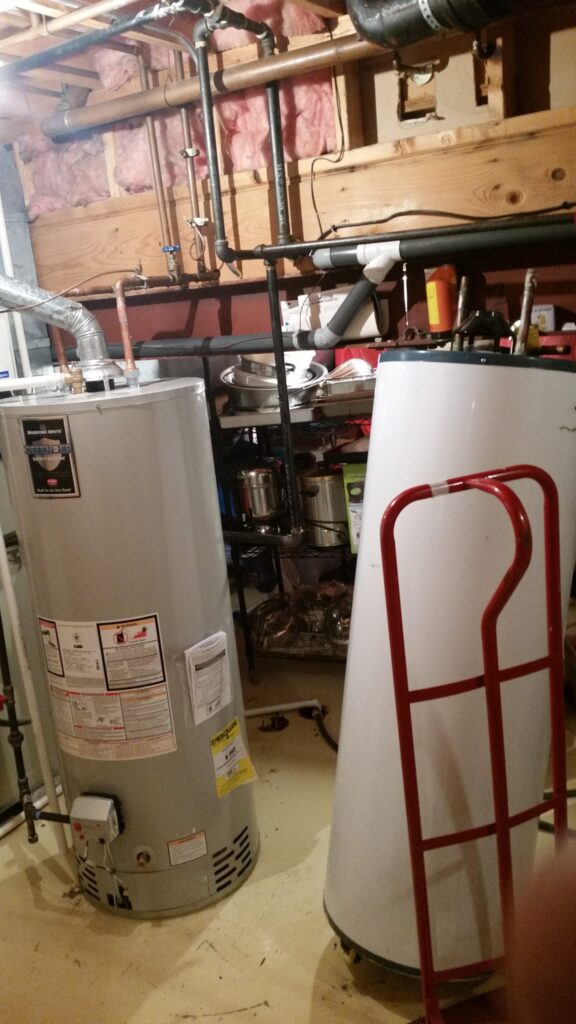Manufacturers suggest that the average water heart can last for between 8-12 years before needing a replacement. Some models may go up to 15 years or more, while entry-level units may only provide six years of service.
The best way to extend the life of your water heater is to provide it with regular maintenance. The replacement of a heating element or pressure-relief valve can be more cost-effective than replacing the entire unit.
You can also take some specific steps with your water heater throughout its life to extend this investment.
How to Extend the Life of a Gas Water Heater
The most crucial step of extending the life of a gas water heater is to check your lines periodically. Any corrosion or cracks in these pipes requires immediate repair from a qualified service technician.
If yousmell rotten eggs in your home, this indicates a gas leak is present. Take all necessary safety precautions and call the appropriate authorities.
1. Turn the gas valve to its pilot setting. This step prevents the burners from turning on during the flushing process.
2. Ensure that the flue drains air appropriately. Light a match next to the bell housing to watch where the smoke moves. If it is not going up the pipe, you may have a blockage to remove
3. Test the temperature relief. You can accomplish this step by placing a bucket below the extension pipe before opening the valve. The water should only flow when you have it open.
4. Change the water heater’s thermostat to the manufacturer’s recommended setting. It is usually 120°F, but it may be variable on some units.
5. Periodically check on the status of your pilot light. It should have a steady, blue hue to it. Should you need to re-light it because of a service disruption, the instructions to do so are provided on the side of most models or in the owner’s manual.
6. Remove the flame shield to view the burner’s operation at least once per year. As you turn up the thermostat, watch how the flame reacts. If it is not burning blue or steady, you may have some maintenance work to complete.
7. Schedule time to drain tank sediment at least once per year. You can connect a garden hose to the valve at the bottom of the water heater, with the other near a drain or leading outside.
How to Extend the Life of a Tankless Water Heater
Tankless water heaters provide an unlimited supply of hot water. The unique design of this technology can also create some maintenance issues.
Eliminating scale from the heat exchange elements is the best step you can take to prolong the life of this technology. Limescale can harden rapidly and reduce the heating effectiveness of the tankless system.
Always follow the instructions provided in the owner’s manual to complete this task.
Vinegar has enough acidity to eat through the limescale to restore the system’s functionality. You may also want to attach hosing lines to your purge port valves to flush the system.
It also helps to find the filter, remove it, and clean out the inside screen and housing with clean tap water.
How to Extend the Life of a Boiler
Boilers are a special-purpose hot water heating system. This option distributes the heat to the fluid as it passes through a radiator, faucets, or other devices. Cold water returns to it to get reheated.
That means the maintenance challenges are slightly different since a tank isn’t storing hot water for later use.
Flushing the system twice per year can let you see the health of the boiler. If the water is full of debris or tinged with a brown or yellow hue, it is time to clean the system.
Some boilers come with self-cleaning technologies that remove sediment automatically. Instead of an annual flush, these systems benefit from a 3-year cycle.
Start by turning the power off to the boiler. Then turn the supply valve off. Let the water cool until it becomes lukewarm.
You can then attach a garden hose to the drain.Opening the drain valve and air vents will help to remove the fluid from the system.
Once the water stops flowing out of the hose, you can refill the system. Close the air vents, shut the drain valve, and restore the water supply to the system.
Refer to your system manual for the correct PSI level. If that is not available, you should add water if the gauge is less than 12 PSI.
How to Extend the Life of an Electric Water Heater
Electric water heaters are the most common appliance installed in homes today. This option uses a large tank to store hot water so that it is available when needed.
The most common issues faced with an electric water heater involve a defective heating element or a faulty thermostat.
It helps to drain the water heater at least twice per year. This step helps to get rid of the collected sediment that can trigger corrosion within the unit. You’ll also notice an increase in its efficiency while working.
You can alsotest the pressure relief valve by lifting the handle. As it snaps back, a burst of water should travel through the overflow drainpipe. If you don’t see any fluid movement, a new valve needs to get installed.
Reducing the temperature setting to 120°F on electric models can also reduce the damage that occurs due to overheating.
When Do I Need to Perform Maintenance on an Electric Water Heater?
Electric water heaters sizzle or hiss when excessive sediment levels collect in the tank. When you hear this sound, drain the system until you see clear water. Then you can remove the elements, soaking them in a pan with white vinegar for up to an hour to remove the collected scale.
You may have leaking water supply lines that prevent the water heater from its optimal performance. Tightening the fittings may resolve the issue, but a complete replacement may be necessary if the pipes have been compromised.
Remember to turn the power off to an electric water heater before working on the system in any capacity.
How to Test the Wiring on an Electric Water Heater
Electric water heaters use one or two heating elements to create standby hot water. When the appliance only offers cold fluids, the upper element could be to blame on a dual system.
If you have a single element system, you know that this equipment could be malfunctioning.
Instead of replacing the entire appliance, it may be cheaper to repair the affected element.
You may also have an element issue if your water heater keeps tripping the circuit breaker. That happens when it has grounded, creating an electrical short in the system.
Start this maintenance work by turning off the breaker inside your main panel.
Once you know it is safe to work on the tank, look for a panel held to the side with screws. Some units have two access areas.
Remove the screws to release the panels. You may need to move some insulation to get to the working area. If you see fiberglass insulation present, it helps to have gloves and safety goggles or glasses available.
A plastic safety cover should be on the element face. Snap it off of the unit.
Hold a non-contact voltage detector next to the wires that connect to the element. Do the same for the wiring that goes to the thermostat. An audible alarm sounds if electricity is still present.
Once you confirm it is safe to continue, loosen the two element screws and remove the wires underneath. Make a note of the wattage rating that’s printed on the face.
Now, use a multimeter turned to the RX1K setting. This measurement will show you the resistance times 1,000 ohms. Here is where the wattage reading becomes critical.
If your electric water heater has a 3,500-watt element, the multimeter should read 16 ohms. A 5,500-watt product registers between 10-11 ohms.
When you do not get a reading or it is less than it should be, the heating element should get replaced.
When Is a Water Heater Replacement Necessary?
Most households replace a malfunctioning water heater with a similar make and model to reduce the labor needed for the plumbing system.
If a replacement is necessary, it may be an excellent time to increase or decrease the capacity of your system to meet the changing needs of your family.
You may also decide to upgrade from a hot water tank to a tankless system.
Any water heater that is more than ten years old is a candidate for replacement. Improvements to energy efficiency technologies can significantly reduce the power consumption experienced in the home.
You may also want to replace a tank that leaks around the base, works erratically, or fails to engage.
If the water heater doesn’t turn on, check to see if a tripped breaker, blown fuse, or closed gas line is responsible for the malfunction.
One Final Tip to Extend the Life of Your Water Heater
Most water heaters in homes today (except tankless models) use a steel tank with a thin glass lining. This design protects the interior metal from premature corrosion.
The lining inside of the water heater eventually cracks. You never know when that might happen since you can’t see into the unit. That’s why manufacturersuse an anode rod as a second later of defense.
Anode rods are typically made from aluminum, an aluminum alloy, or magnesium. They need replacement every five years. If you remember this maintenance tip before it fails, it is possible to double the lifespan of a gas or electric water heater.
Some new water heaters use plastic lining within the tank instead of glass. If this design is in your home, there will not be an anode rod to replace.
Follow the manufacturer’s instructions to replace the anode rod. You may need an air compressor with a half-inch drive impact wrench to loosen the part.
Remember to turn off the power or gas to the unit before completing this maintenance task.
Are You Ready to Extend the Life of Your Water Heater?
With proper maintenance and the occasional repair, it is not unusual for some water heaters to last for 20 or more years.
Since the cost of replacement can be significant, especially with the labor involved, these simple steps can save you a lot of money.
It helps to get into the habit of a monthly inspection to see if anything could be failing on your water heater or tankless system. Then follow the recommended maintenance schedule to maximize this investment.
Remember to save or bookmark this page to have the information needed to extend the life of your water heater starting today!





